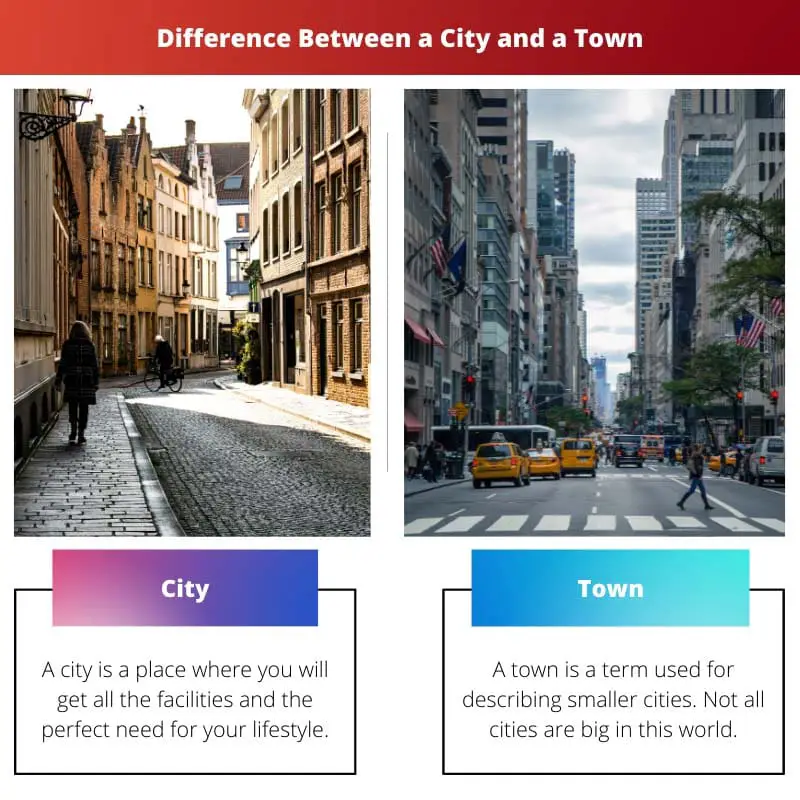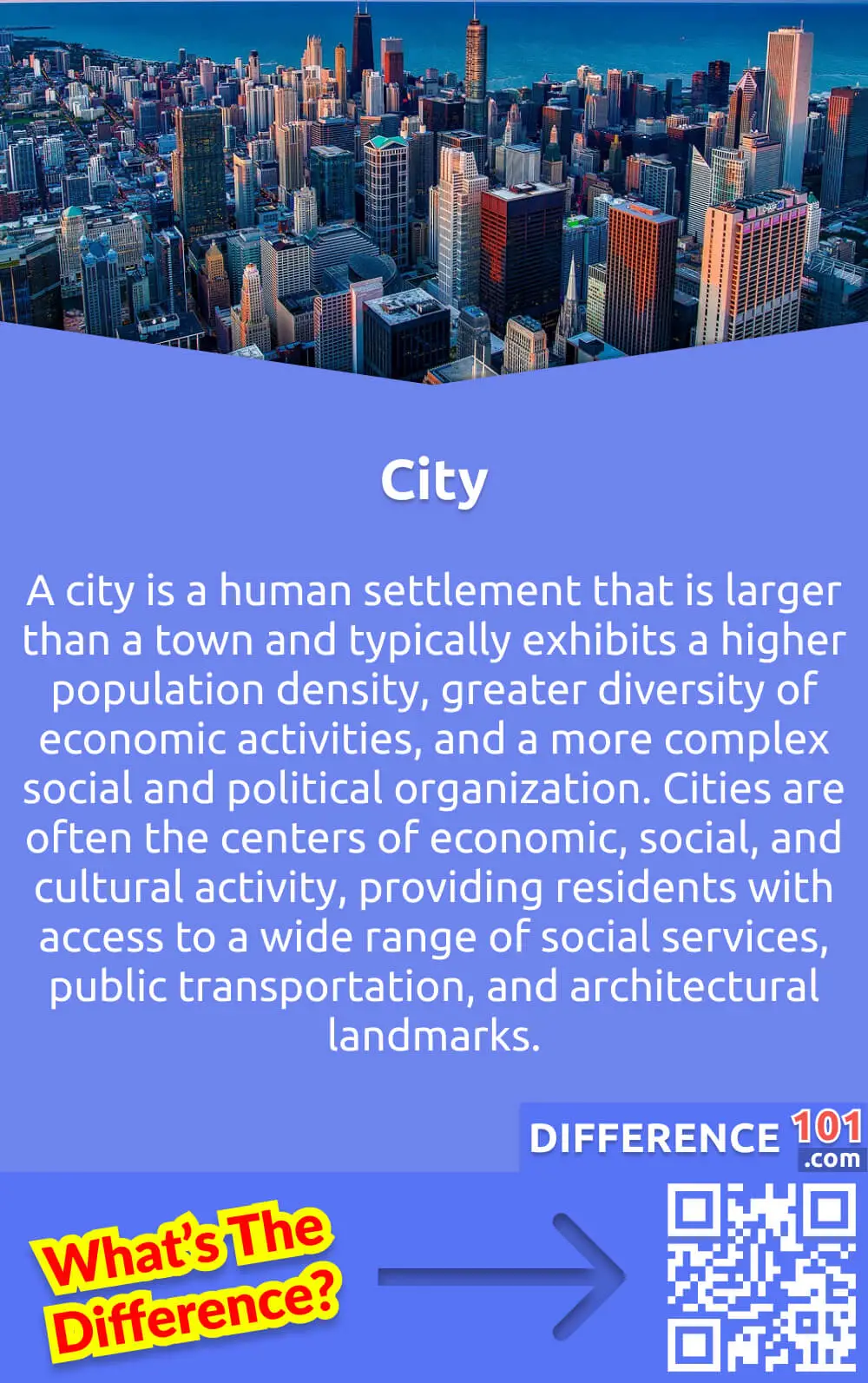Have you ever found yourself wondering about the subtle differences between a township and a city? You’re not alone. In the bustling tapestry of American local government, these terms are often used interchangeably, leading to some confusion. But, just like a well-tailored suit, each structure has its unique fit and purpose. Recently, while attending a town hall meeting in my own suburban community, I realized how much I took the term “township” for granted. There, standing among my neighbors discussing issues like local taxes and zoning regulations, I realized that understanding the difference between a township and a city was crucial to understanding the very foundation of our community governance. So, let’s delve into the world of local government structures, unraveling the nuances that define these two distinct administrative units.

Image: askanydifference.com
Defining the Terms: Township vs. City
Before we explore the distinctions, let’s get a clear understanding of what each term entails. A **township** is a form of local government commonly found in the northeastern and Midwestern United States. It’s often a rural or semi-rural area, encompassing a defined geographical territory. Townships typically provide basic services like road maintenance, fire protection, and sometimes even limited law enforcement.
A **city**, on the other hand, is a more densely populated and urbanized area. It usually holds a charter granted by the state government, which gives it greater autonomy and control over its affairs. Cities are generally characterized by a distinct downtown core, a higher concentration of businesses and residents, and a more complex array of services, including education, transportation, and recreation.
Unraveling the Differences: A Comprehensive Look
Government Structure and Powers
The fundamental difference lies in their organizational structures and the scope of their authority. Townships are often governed by a board of trustees or supervisors, while cities are typically headed by a mayor and city council. This difference in governance reflects their distinct functions. Townships tend to have more limited powers, primarily focused on providing those basic services mentioned earlier. Cities, on the other hand, enjoy broader authority, often setting their own tax rates, zoning regulations, and even handling matters like police and fire departments.

Image: www.difference101.com
Population Density and Urbanization
The level of urbanization is also key. Townships are typically less densely populated, often with a lower concentration of businesses and residents. They tend to have a more rural character, with larger tracts of land and open spaces. Cities, in contrast, are bustling hubs of activity, with a high density of people, businesses, and buildings, often characterized by skyscrapers and a complex network of roads and infrastructure.
Services and Amenities
The range of services provided by townships and cities varies considerably. Townships typically offer basic services, focusing on infrastructure maintenance and public safety. Cities, however, offer a much broader spectrum of services, often including public libraries, parks and recreation facilities, and municipal transportation systems. This difference is directly related to the level of urbanization and the complexity of urban life.
Historical Context and Evolution
The historical context of these terms is also important. Townships emerged as a way to organize land and provide basic government services in sparsely populated areas. Cities, on the other hand, developed from centers of trade and commerce, growing in population and complexity over time. This historical evolution has shaped their present-day functions and power structures.
Current Trends and Developments
In recent years, the line between townships and cities has become increasingly blurred. Suburban sprawl and changing demographics have led to some townships adopting more urban characteristics. This blurring of lines has led to discussions about the role of townships in the modern era, with some questioning their relevance in an increasingly urbanized world. Others argue that townships are still crucial for maintaining a sense of community and providing essential services in rural and suburban areas.
Tips and Expert Advice
Understanding the differences between townships and cities is important for anyone living in or near these areas. It helps you better understand the local government structure, identify which services are being provided, and engage in local political discussions. For residents, it’s important to stay informed about local issues and participate in community meetings to ensure that your voice is heard and your interests are represented. Actively engaging with your local government, whether it’s a township or a city, is crucial for shaping the future of your community.
Key Takeaways:
- Townships and cities are distinct forms of local government, with different structures, powers, and services.
- Townships are typically rural or semi-rural, offering basic services, while cities are urbanized and provide a broader range of amenities.
- The line between townships and cities is becoming blurred as demographics change and urbanization spreads.
- Actively participating in local government affairs is important for everyone, no matter where they live.
Frequently Asked Questions:
- Q: Can a township become a city? A: Yes, in many cases, a township can apply for a charter to become a city. This process typically involves meeting certain population and development criteria set by the state government.
- Q: Are townships always found in rural areas? A: While townships often have a rural character, some townships are located in suburban or even semi-urban areas. The level of urbanization can vary greatly.
- Q: What types of taxes are typically levied by townships and cities? A: Both townships and cities can levy property taxes, but cities may also have additional taxes like sales taxes or income taxes to fund a wider range of services.
- **Q: What are some examples of services provided by townships and cities?** A: Examples of typical township services include road maintenance, snow removal, and fire protection. Cities often provide additional services such as sanitation, public transportation, libraries, and recreation centers.
Difference Between Township And City
Conclusion
In the intricate landscape of American local government, understanding the difference between townships and cities is crucial for informed citizenship. These distinct structures reflect the diverse needs and characteristics of our communities. By understanding their unique functions and powers, we can engage more effectively in local governance and contribute to the well-being of our towns and cities.
Are you familiar with the differences between townships and cities in your area? Share your thoughts in the comments below!





